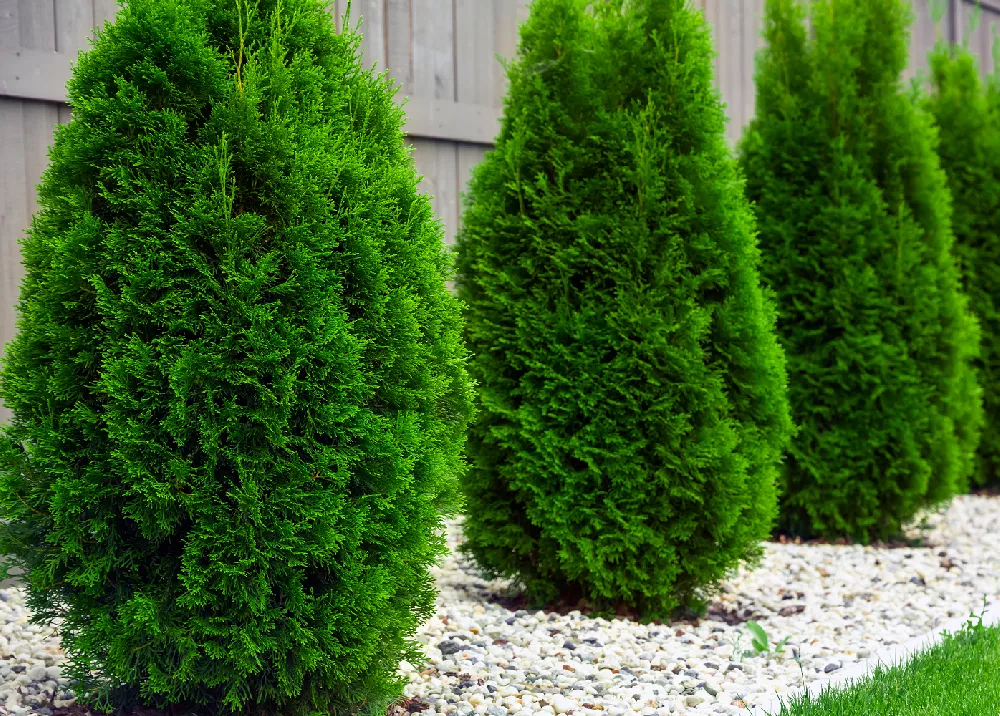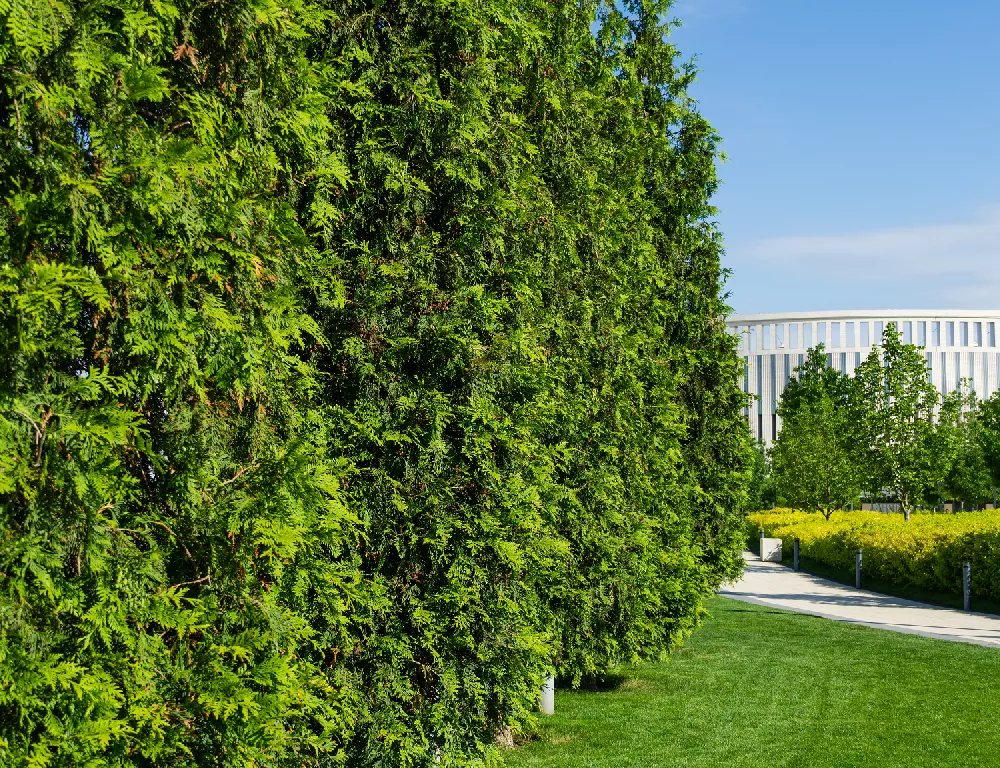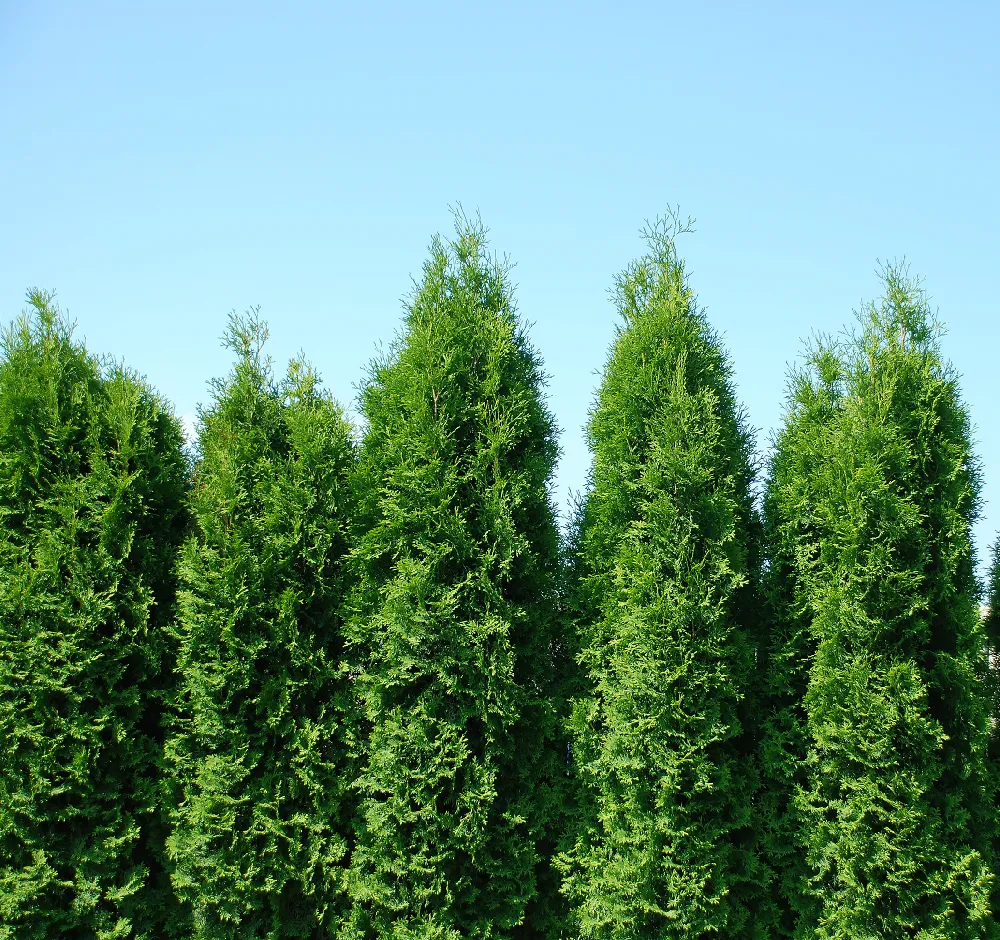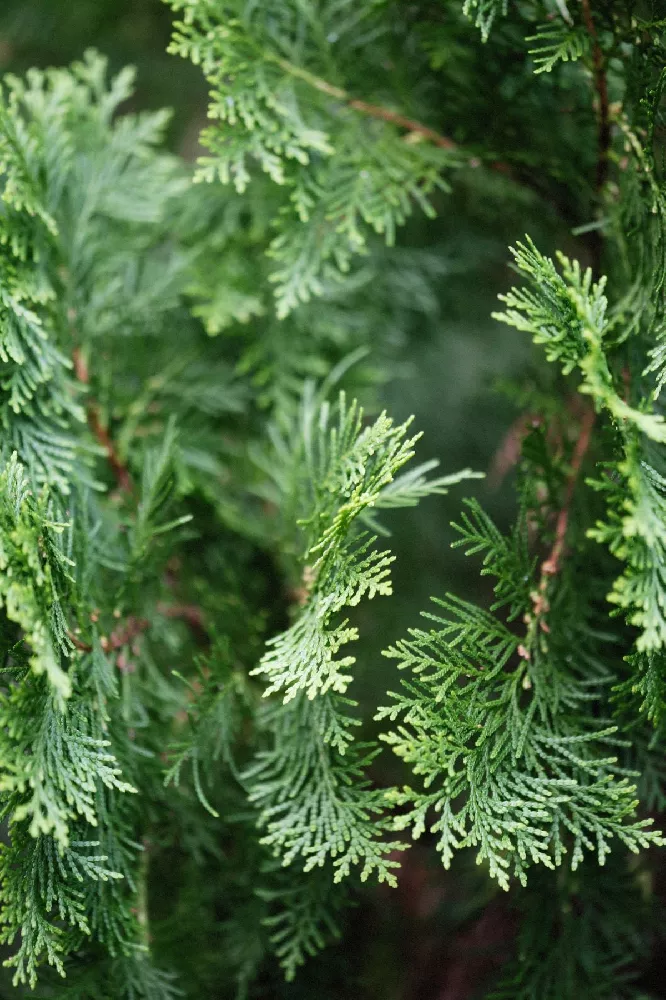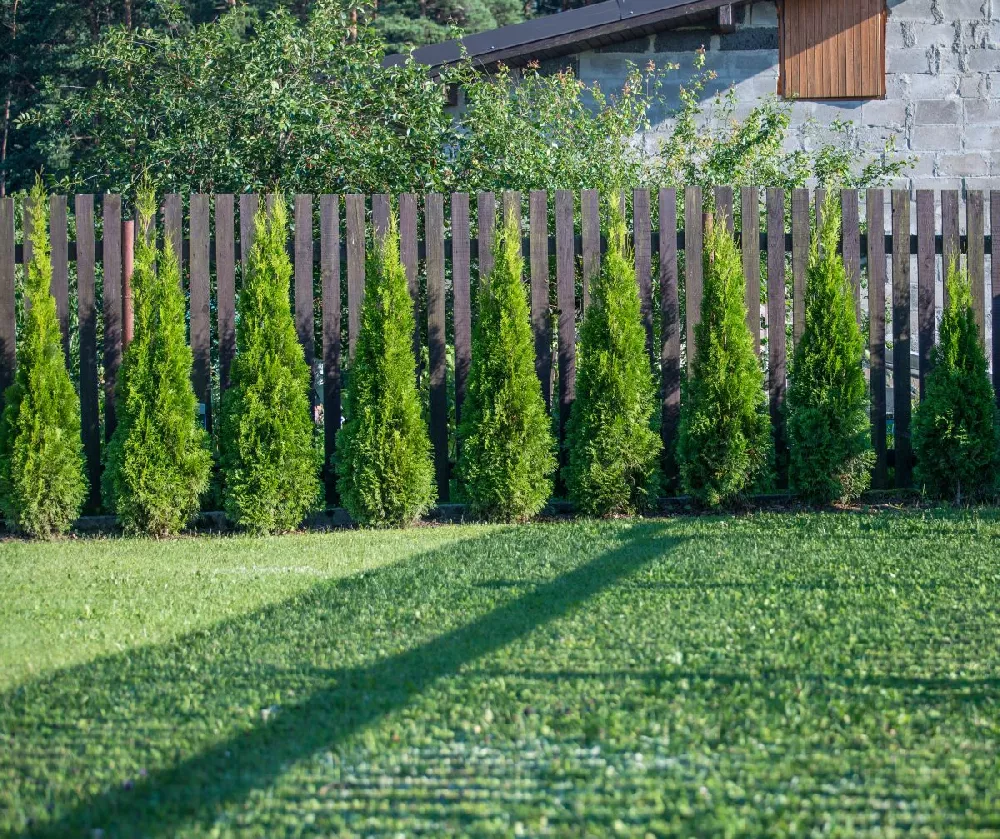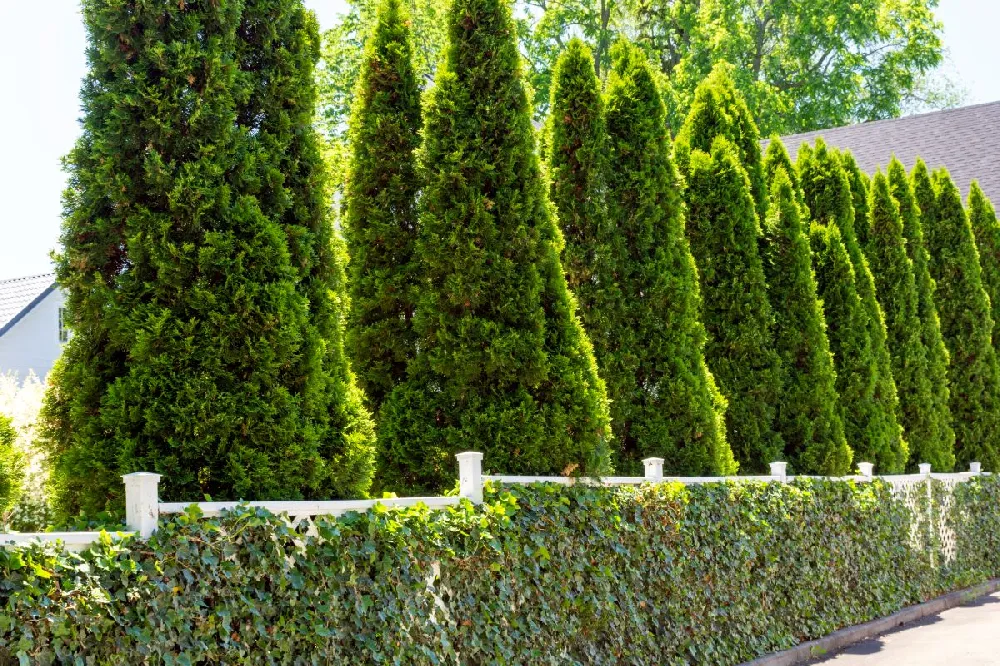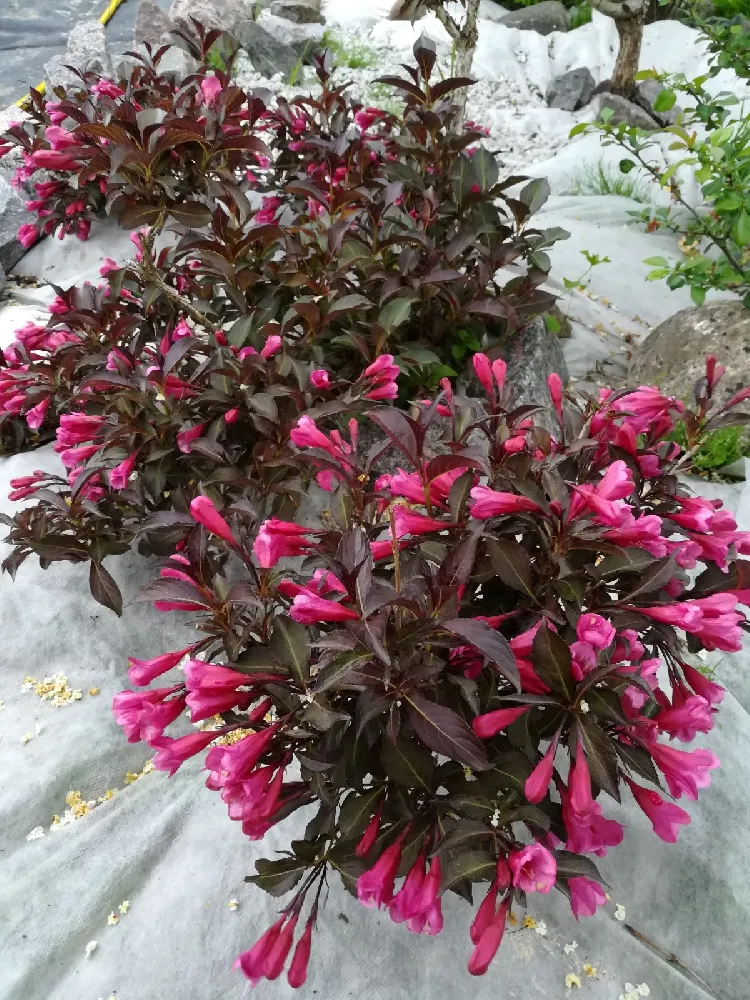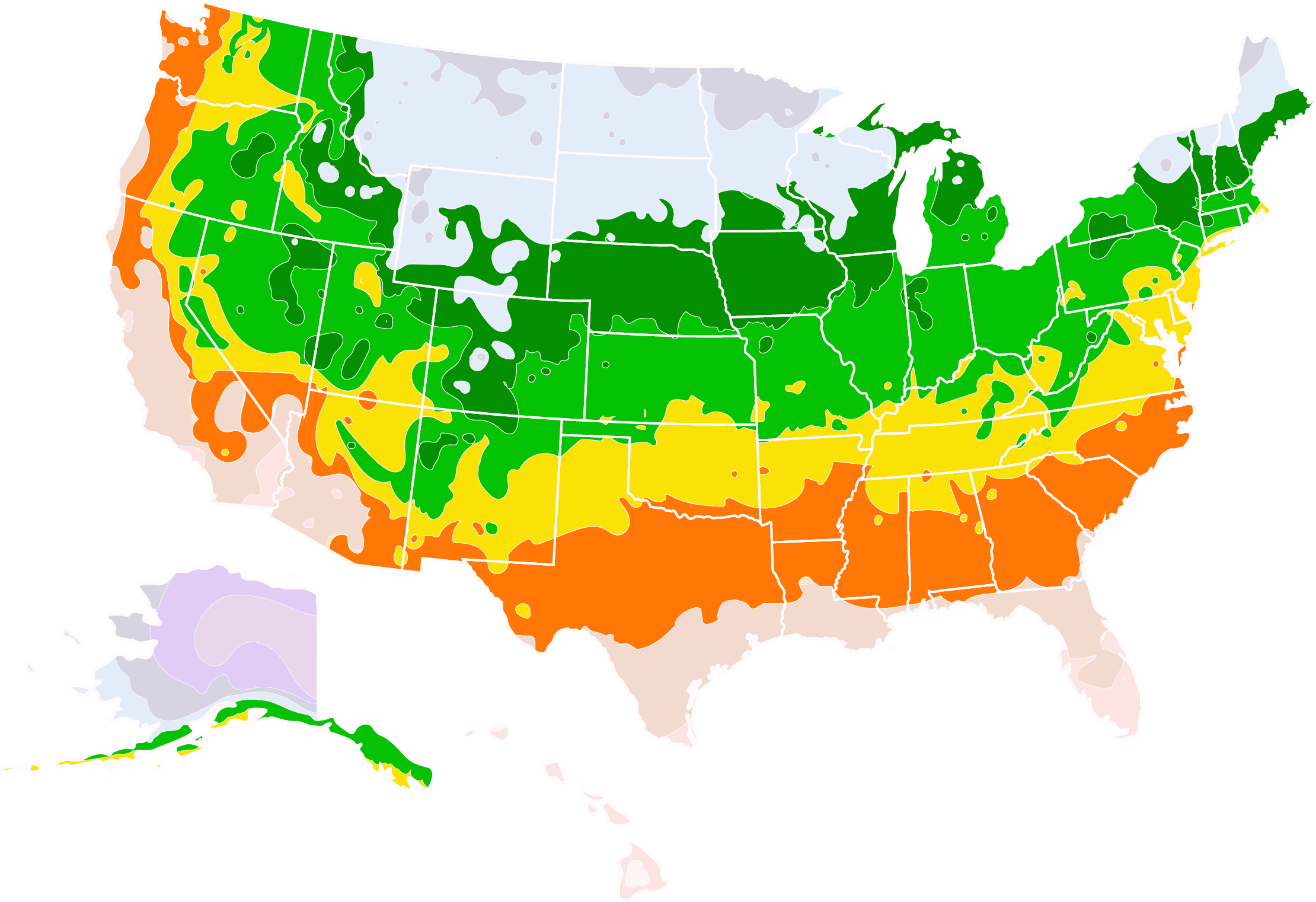- Home >
- Privacy Trees >
- Baby Giant Arborvitae
Baby Giant Arborvitae for Sale - Buying & Growing Guide
- Ships in 1-2 days
- 1-Year Warranty Eligible
- Pots or accessories are not included unless specified in the product options.
Shipping Details:
Once your order is shipped, you’ll receive an email with a tracking number and estimated delivery date. Most orders ship immediately, but some items are seasonal and may only ship in spring or fall. These products are noted on the website.
Arborvitaes are among the most commonly used evergreen plants, but many varieties will eventually grow to incredibly large sizes. However, this is not the case for the baby giant arborvitae, or Thuja plicata x standishii PPAF 61830744 ‘Virginian™.’ It maintains a reasonable size while offering all the benefits you'd expect from a typical arborvitae. Whether you hope to add privacy, create some wind protection, or add a consistent green backdrop to your garden, the baby giant arborvitae is one of the best plant varieties you can choose to plant.
- The baby giant arborvitae adds consistent evergreen foliage to your yard all year.
- It works well for privacy or wind screening.
- It stays relatively small compared to other arborvitaes.
Plant Care
Sunlight

The baby giant arborvitae grows best in areas that receive full sun.
Watering
Water about once per week during the growing season or less.
Fertilizing

Feed this plant with a nitrogen-rich fertilizer once per year in early spring.
Planting and Care
Planting instructions
The soil in which a baby giant arborvitae grows should be moist but have good drainage. It can also range from acidic to slightly alkaline. While other arborvitaes typically require full sunlight, the baby giant arborvitae is somewhat adaptable to partial shade as well. Still, full sun exposure makes for the best growth. Plant your baby giant arborvitae by digging a hole that is deep enough to keep the plant’s root flare just above the soil’s surface. Loosen the root ball and the inner sides of the hole before planting to help this plant’s roots spread easily through the soil.
Watering and nutrients
Young baby giant arborvitaes will need plenty of water to keep their roots moist during establishment. However, the water needs of this plant will drop dramatically when it has reached a somewhat mature age. A well-established baby giant arborvitae should receive water about once per week but will often survive by receiving water only during droughts and heat waves. The best way to fertilize this plant is to apply a nitrogen-rich fertilizer mix during the early spring.
Pollination
As is the case for all arborvitae varieties, the baby giant arborvitae relies on wind currents to carry its pollen and allow for pollination. Each of these plants will bloom with both male and female flowers. However, you are not likely to notice these flowers as they are quite unremarkable from an ornamental perspective. Instead, the main purpose of these flowers is a strictly functional one, which is to produce the small, seed-bearing cones that arborvitaes use to replicate themselves.
Pruning
The ideal time to prune a baby giant arborvitae is during the early spring months. During that season, you can prune to remove dead, damaged, and diseased parts of the plant. You can also trim the exterior foliage of the baby giant arborvitae to shape it into a specific form. Typically, these plants will respond well to pruning. However, the baby giant arborvitae has a relatively low need for pruning as it remains small throughout its life and also takes on a neat form on its own.
Pests, diseases, and animals
There are a few diseases that can affect your baby giant arborvitae. Twig blight and multiple forms of tip blight are some of the most common issues this plant can face, all of which lead to browning and dieback of the twigs and foliage. Additionally, heart rot can occur in the baby giant arborvitae, as can root rot, which is often the result of overwatering. Regarding insect infestations, the bagworm is the most likely insect to harm this species.
Achieving maximum results
One of the best tips to keep in mind when pruning a baby giant arborvitae is to avoid removing too much of the foliage. While these plants are responsive to pruning, they will not sprout new growth from old wood. As such, removing too much foliage can lead to bare patches that will never fill in again. Also, you should do your best to avoid planting this tree in areas with clay soils. A lack of drainage is one of the few soil characteristics that this plant tends to struggle with.
FAQs
What is the meaning of the name baby giant arborvitae?
How can you make a baby giant arborvitae grow faster?
Arborvitaes are usually fast-growing plants, but there are some ways you can help yours grow even faster. Ensuring fast growth begins at the planting phase. Grow your baby giant arborvitae in soils that contain plenty of nutrients to support healthy growth. You should also keep up with regular seasonal fertilization and consider adding organic soil amendments, such as compost or manure, to guarantee your tree gets all the fuel it needs to grow as fast as it can.
What are the best ways to use the baby giant arborvitae in the garden?
The most common way to use a baby giant arborvitae in your garden is to plant it as a protective hedge. This hedge may provide wind protection, increased privacy, and, occasionally, some shade. However, the baby giant arborvitae is a surprisingly attractive plant with rich foliage and a pointed form. Those characteristics allow the baby giant arborvitae to stand alone in your garden bed as a focal point of attractive evergreen foliage.
Compare Similar Products
Customer Reviews
 Baby Giant Arbovitae
Baby Giant ArbovitaeShipped quickly, price was very comparable with local nursery (which were out of stock) and was easy to plant. Ordered the 4'-5' size & they showed up closer to 5'-6' which is perfect! They look great and seem to be growing well, too early to really say how they will grow into their new homes, but so far so good. Very happy/impressed with the order/shipping process, and not misleading at all with the descriptions!
 Smaller then I thought
Smaller then I thoughtI ordered the 1-2ft and just expect a bigger shrub. But besides that everything else was good. Ive planted now a couple of weeks and feel like they've grown slightly. Just know 1-2 ft is in actually like 10in-12in and like a charlie brown Christmas tree. But they'll grow right eventually
 Loved them but...
Loved them but...We have never bought plants online before. After reading the good reviews we thought we'd give them a try. They came 7 business days and all 10 plants were healthy, but within the first week all 10 plants barely have any green on them. We're hoping that they are just in shock. We bought the warranty but we're hoping we don't need to use it.
 New Baby giants
New Baby giantsBuying experience on line was very easy. I ordered 8 of the Baby Giant Arborvitae trees. Very quick delivery. Out of the 8 trees, 6 were brown, I am hoping its just that time of year... Hopefully this spring, the tips turn back to green
You can't add more Product Name - Product size to the cart.
OK